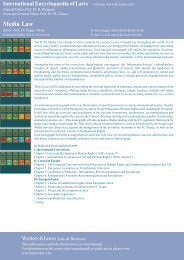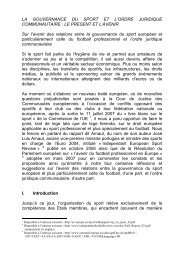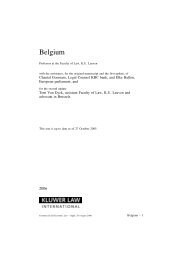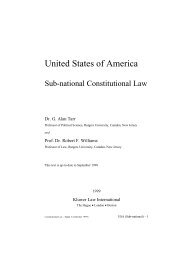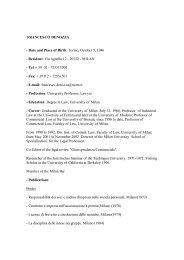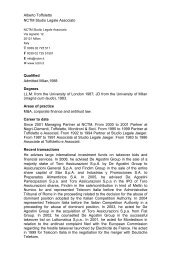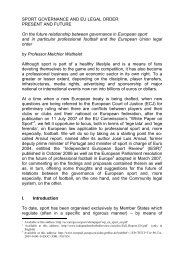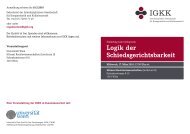Denmark - International Encyclopaedia of Laws
Denmark - International Encyclopaedia of Laws
Denmark - International Encyclopaedia of Laws
You also want an ePaper? Increase the reach of your titles
YUMPU automatically turns print PDFs into web optimized ePapers that Google loves.
General Introduction 11–41. In this section, figures and statistics are sourced from English-language publications by Statistics<strong>Denmark</strong>, ‘<strong>Denmark</strong> in Figures 2009’, ‘<strong>Denmark</strong> in Figures 2010’ and ‘Statistical Yearbook2009’, available for download from: (last visited 19 Mar. 2010).§1. DENMARK: AGENERAL BACKGROUNDI. Geography and Climate1. Located in Northern Europe, <strong>Denmark</strong> is a small country <strong>of</strong> 43,098 squarekilometres, characterized by 407 islands and an extensive coastline stretching over7,300 kilometres. Bordered by Germany to the south, <strong>Denmark</strong> is the most southern<strong>of</strong> the Nordic countries and forms a natural link between continental Europe and itsNordic neighbours. The Kingdom <strong>of</strong> <strong>Denmark</strong> includes Bornholm, an island in theBaltic Sea, and the essentially self-governing areas <strong>of</strong> Greenland and the FaroeIslands.2. Danes use ferries, air transport and well-developed infrastructure to travelwithin the country. Bridges and motorways connect <strong>Denmark</strong>’s western peninsular<strong>of</strong> Jutland to the middle island <strong>of</strong> Funen, and further east to the largest <strong>of</strong> <strong>Denmark</strong>’sislands, Zealand. <strong>Denmark</strong>’s capital, Copenhagen (København), is locatedon the east coast <strong>of</strong> Zealand and in 2009 had almost 670,000 residents 1 and a relativelynew metro system. Since 1999, the Oresund Bridge near Copenhagen haslinked <strong>Denmark</strong> to southern Sweden.1. As on 1 Jan. 2009, ‘Copenhagen City’ is listed as having 667,228 residents and the ‘CapitalRegion’ (Region Hovedstaden) a population total <strong>of</strong> 1,662,285 people.3. The predominantly flat Danish landscape reflects thousands <strong>of</strong> years <strong>of</strong> historyas an agricultural country – around 66% <strong>of</strong> the surface area is considered manmadeagricultural, while forests and nature-like areas account for another 15%, andcities, roads, motorways, bridges or other artificial surfaces total a further 10%. Thetemperate coastal climate is punctuated by variable weather, with a high annualnumber <strong>of</strong> rainy or cloudy days and minimal hours <strong>of</strong> sunshine. Temperaturescan fluctuate significantly away from the winter and summer averages <strong>of</strong> 0°C inJanuary and 16°C in August.II. Population and Values4. At the start <strong>of</strong> 2009, <strong>Denmark</strong>’s population was 5.51 million people, withwomen slightly outnumbering men due to a higher male mortality rate. The ageingCompetition Law – (February 2011)<strong>Denmark</strong> – 15



